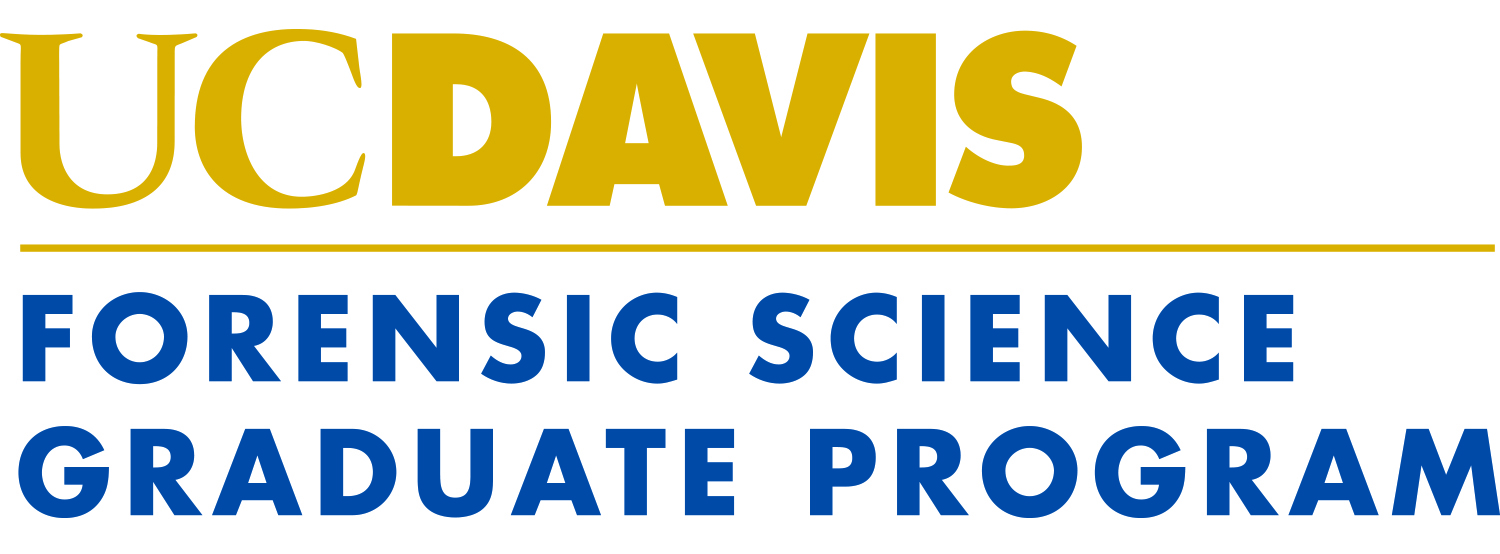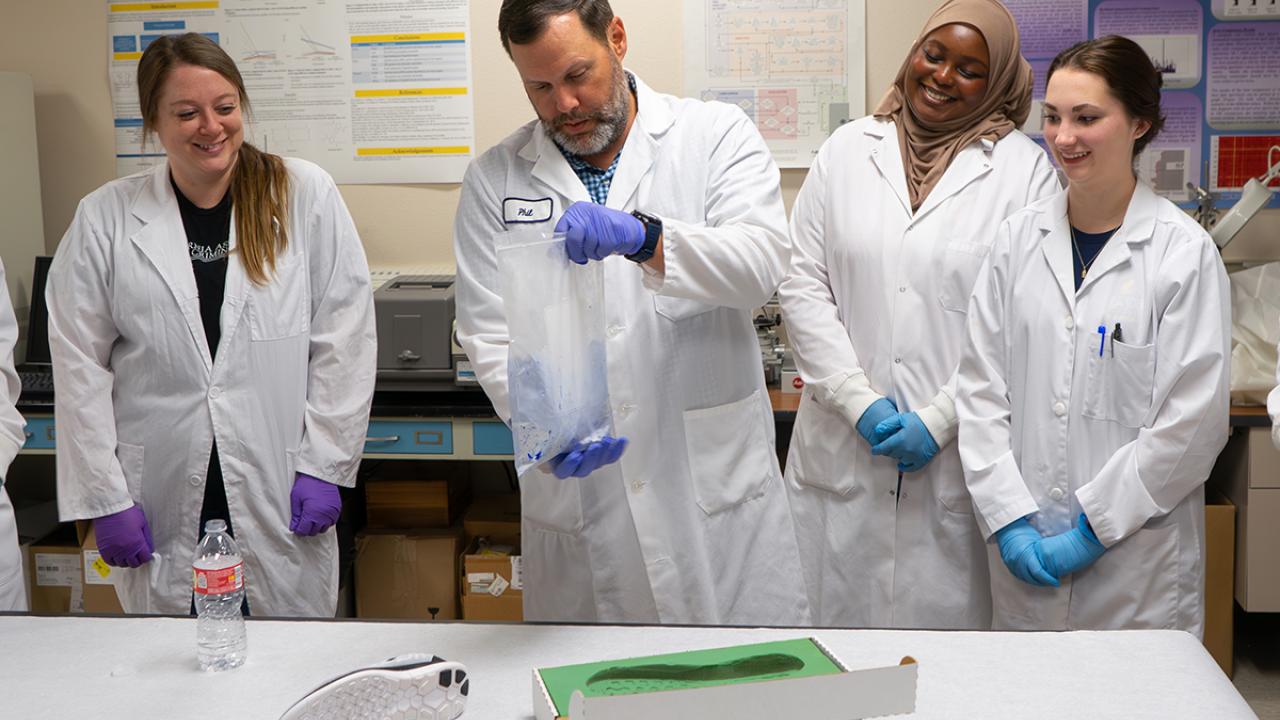
Beyond the Crime Scene: How Philip Hess Brings Real-World Forensic Expertise to the Classroom
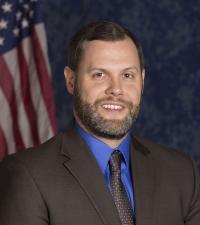
“The amount of reading, writing and research we perform as forensic scientists is grossly underemphasized in the plethora of movies, television shows, books and now podcasts that drive people’s interest in pursuing a career in this field,” says criminalist Philip Hess.
As a lecturer in the UC Davis Forensic Science Graduate Program, he brings extensive professional experience, real-world expertise and deep industry connections to the classroom. His mentorship provides students with practical knowledge that prepares them for careers in the field and helps them gain a competitive advantage when looking for jobs.
“Working in forensic science requires me to be proficient in current techniques and methodologies employed by the industry,” said Hess, who has more than 20 years of experience working with the Sacramento County District Attorney’s Laboratory of Forensic Services. “I pass this on to students through the activities and assignments I create for them, so they can get hands-on, real-world experience.”
Hess teaches Fundamentals of Forensic Science, Homicide Crime Scene Investigation and Forensic Photography in the UC Davis graduate program, where classes typically have 20 students or less. With class sizes this small, students have one-on-one access to instructors like Hess who have decades of experience in all disciplines relating to forensic science.
Tell us about your career path into forensic science.
In my early education I had a wide range of interests, including the sciences, photography and criminal justice. While pursuing a degree in administration of justice at Gavilan Community College, I learned about forensic science and how I could apply my interests in all these areas to a career path. From there, I earned a Bachelor of Science degree in criminalistics at Weber State University, then a Master of Science degree in forensic science and a postgraduate certificate in computer forensic investigations at University of New Haven.
Like many of our graduate students today, when I began looking for jobs most of the forensic jobs required experience working in the field. I took an opportunity to work as an unpaid intern at the Sacramento County District Attorney’s Laboratory of Forensic Services, and a few months later, I began working there as a forensic laboratory technician. I am still employed there, 22 years later, and currently serve as the technical lead for the Firearms and Toolmarks Unit, Impressions (Footwear and Tire Tracks) Unit and the Crime Scene Response Team.
What contributions have you made to the field?
I served on the Organization of Scientific Area Committees (OSAC) for Forensic Science’s Scientific and Technical Review Panel for Firearms in 2023. The OSAC strengthens the nation’s use of forensic science by facilitating the development and promoting the use of high-quality, technically sound standards. These standards define minimum requirements, best practices, standard protocols and other guidance to help ensure that the results of forensic analysis are reliable and reproducible.
From 2020-2023, I had the unique opportunity to represent the United States as the committee chairperson of the Marks, Footwear and Tire Track review committee for INTERPOL. Our committee’s 30-page review paper was published in the Forensic Science International: Synergy Volume 6. I also presented the synopsis at the 20th International Forensic Science Managers Symposium in France.
In 2021, I was requested by the California Attorney General’s office to teach courses relating to Officer Involved Shooting investigations for their deputy attorney generals and investigators who will be investigating all police shootings that result in the death of an unarmed civilian, as required by Assembly Bill (AB) 1506.
I am past president, life member and distinguished member of the California Division of the International Association for Identification and served on the executive board for the association from 2007-2023. I have also published research and technical articles in the Association of Firearms and Toolmark Examiners Journal, Forensic Science International and the California Identification Digest.
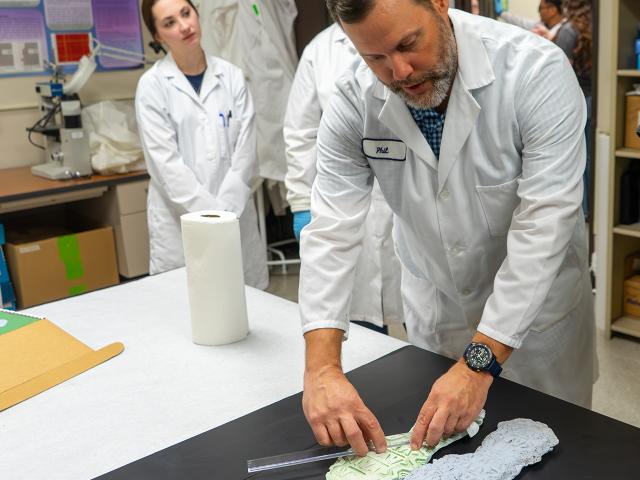
What are some of the hands-on learning and collaboration opportunities available to students in the M.S. program?
One of the program’s biggest assets is being housed in its own standalone building (adjacent to the UC Davis campus) with a forensic biology laboratory space and criminalistics laboratory space. Both are equipped with instruments and equipment to perform forensic biology (DNA) analysis, toxicology and arson analysis and physical pattern matching examinations. Students have access to the classroom and laboratory spaces to conduct their research and work on their assignments at any time. They also have access to biology and chemistry instruments at UC Davis, including in the Environmental Toxicology Program. Having this kind of access at one of the world's top research universities is an incredible advantage to students in the program.
Students also benefit from the amazing internship opportunities that many of our graduate students have in the region from county, state and regional laboratories like the California Department of Justice Bureau of Forensic Services regional laboratories and Sacramento County District Attorney’s Laboratory of Forensic Services. There are also many opportunities to intern or work at law enforcement agencies and coroner’s offices in the region.
What does your faculty mentorship look like and how do you support students in research, thesis work and career advice?
Over the last seven years, I have had the opportunity to act as a technical advisor and thesis committee member on a variety of topics involving firearms and toolmarks, footwear impressions, bloodstain pattern interpretation, gunshot residue analysis and contact DNA recovery methods from firearms. I advise students on the methods and experimental design of their research projects, data interpretation and research results reporting. I have also supervised graduate students’ research projects when they have worked as interns at the crime lab, directly assisting them with their thesis research through graduation.
I have used my networking contacts with the California Association of Criminalists and the International Association for Identification to help students coordinate presenting their research at these professional conferences. This gives them experience presenting in the industry to potential employers and peers while sharing their valuable research with forensic practitioners who will also benefit from the results of their research.
As job opportunities around the country become available, I share them with students and work closely with them to prepare their resumes and applications, as well as offering to prepare them for potential interview questions and exams that are common in our industry.
What industry connections do you have and how can students benefit from them?
I have established a large network by volunteering for forensic professional associations and teaching industry professionals from around the U.S. and beyond. This helps me provide up-to-date career opportunities around the country for students to consider when applying for work.
I also have a wide range of contacts with the vendors and companies who supply the instruments, equipment and materials to forensic labs around the world. This helps to establish collaboration between our students who are looking for current research ideas and companies who have the latest innovative technologies that they want tested and validated in a research publication.
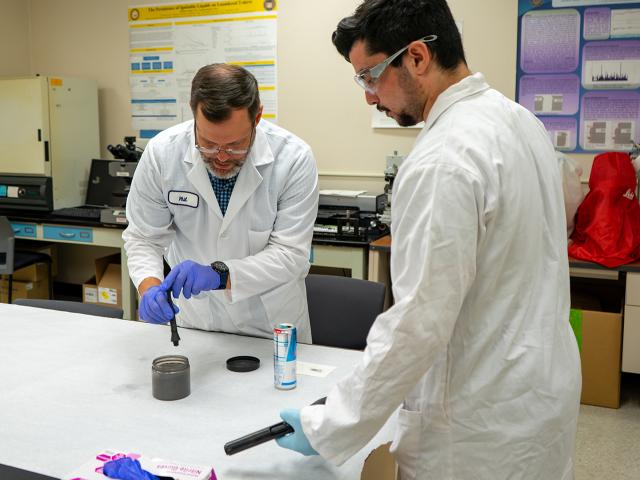
Tell me about your teaching experience.
I have over 20 years of experience providing local, state and federal law enforcement officers and forensic scientists from around the world with forensic training. I currently teach six different Peace Officers Standards and Training (P.O.S.T.) approved courses in forensic science for the California State Department of Justice and I am also a P.O.S.T. certified firearms instructor and hold certification with the International Association for Identification in Forensic Photography. I also taught forensic courses at the community college level, as well as California State University, Sacramento, before being hired at UC Davis.
In 2012 I received the California Association of Criminalists Paul Kirk Presidents Award for outstanding contributions to the field.
Tell me about your approach to teaching and the type of learning students can expect in your classes.
I make a concerted effort to choose textbooks that represent the required reading materials from the certifications students will later seek once they are working in the field. These materials are relevant and current, and it gives them a head start on studying for certification exams. Assigned texts are supplemented with case reviews, including photographs, sketches, 3D models and reports from actual casework in the field of study, giving students real-world examples of how the job is performed. Students are also given practical assignments to work in that emulate competency and proficiency tests they will be required to complete once they are hired by a lab or agency.
In the Forensic Photography course, students use modern camera equipment to complete seven different assignments photographing vehicles, bloodstains, fingerprints, shoeprints and tire tracks, shooting reconstruction, and other common types of evidence and scenes.
For the Homicide Crime Scene Investigation course, students participate in various hands-on, case-based activities where they process mock evidence for fingerprints, contact DNA and trace evidence. They create crime scene diagrams, photograph mock crime scenes, and process, collect and package items of evidence that they will later write a crime scene report on. They also testify in mock trials, testifying about their roles in the mock crime scenes as they will do in the real-world, and learn to create two-dimensional and three-dimensional lifts and casts of impression evidence.
Pursue Your M.S. in Forensic Science
Sign up for a free online information session to learn more about the program and get answers to your questions.
From your perspective as a working professional in a crime lab, does a master’s in forensic science improve the career path of students?
Much of our workday is spent reading and writing reports, procedures and policies, accreditation standards and guidelines, court rulings and legal decisions that relate to physical evidence and expert witness testimony, etc. Job applicants who possess a Master of Science degree have already demonstrated their ability to perform these vital tasks that are often overlooked as being important because this part of the job is rarely highlighted by the television and movies that popularize the role of a forensic scientist.
I have sat on interview panels for many police agencies and crime labs in the region, and the number of applicants who have a master’s degree has increased as students are looking to give themselves any advantage they can in an extremely competitive job market where it is common to see over 100 applicants for a single job. Having a master’s degree from a program like UC Davis demonstrates that the applicant has successfully performed master’s-level research in the industry they are pursuing.
